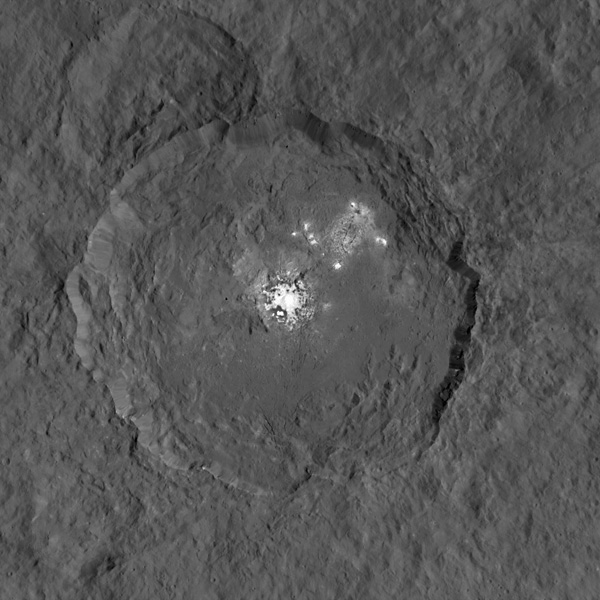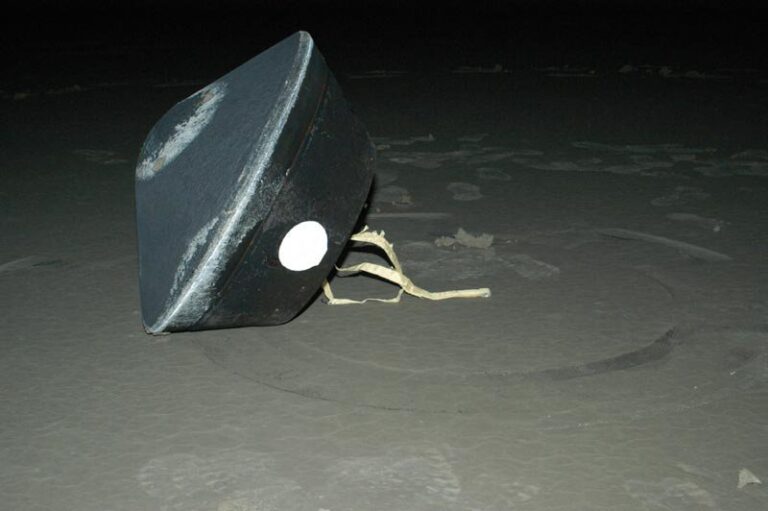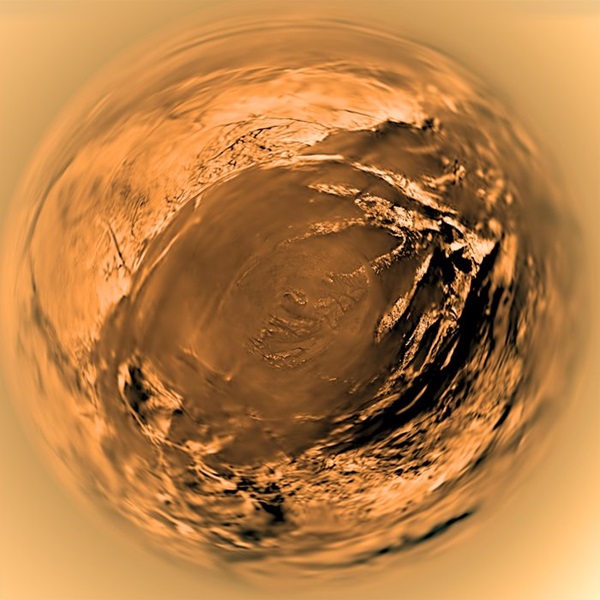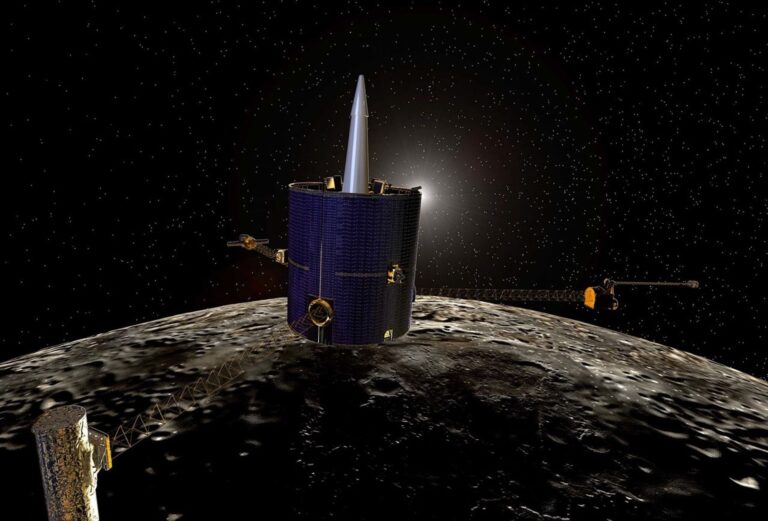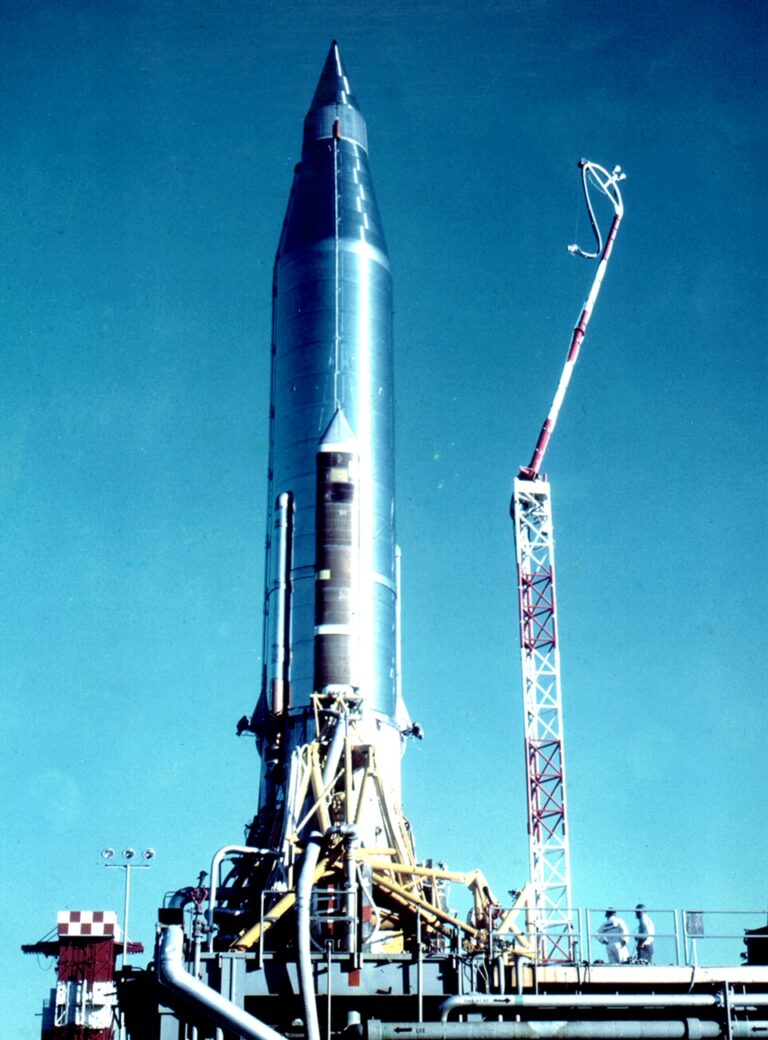The new up-close view of Occator Crater from Dawn’s current vantage point reveals better-defined shapes of the brightest central spot and features on the crater floor. Because these spots are so much brighter than the rest of Ceres’ surface, the Dawn team combined two different images into a single composite view — one properly exposed for the bright spots and one for the surrounding surface.
Dawn scientists note the rim of Occator Crater is almost vertical in some places, where it rises steeply for 1 mile (1.6 kilometers).
Views from Dawn’s current orbit, taken at an altitude of 915 miles (1,470km), have about three times better resolution than the images the spacecraft delivered from its previous orbit in June and nearly 10 times better than in the spacecraft’s first orbit at Ceres in April and May.
The spacecraft has already completed two 11-day cycles of mapping the surface of Ceres from its current altitude and began the third on September 9. Dawn will map all of Ceres six times over the next two months. Each cycle consists of 14 orbits. By imaging Ceres at a slightly different angle in each mapping cycle, Dawn scientists will be able to assemble stereo views and construct 3-D maps.
Dawn is the first mission to visit a dwarf planet and the first to orbit two distinct solar system targets. It orbited protoplanet Vesta for 14 months in 2011 and 2012 and arrived at Ceres on March 6, 2015.

